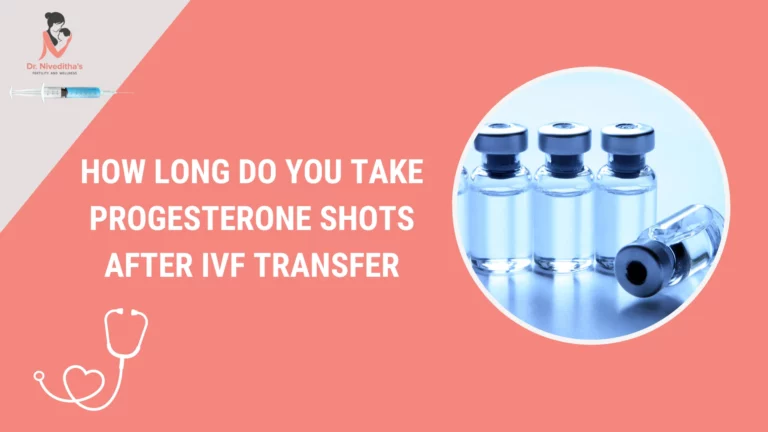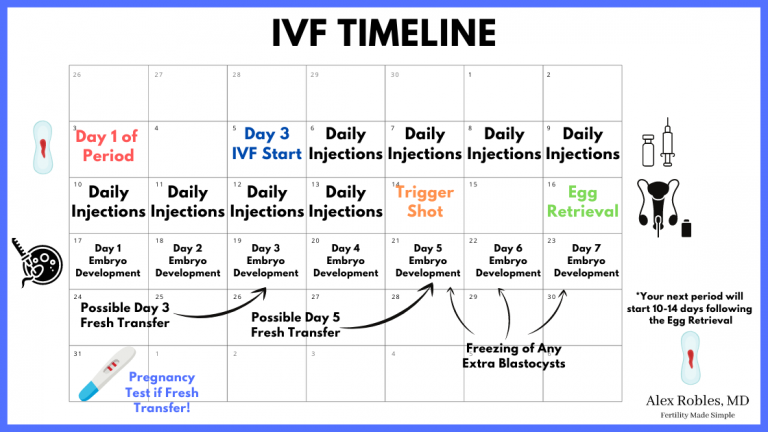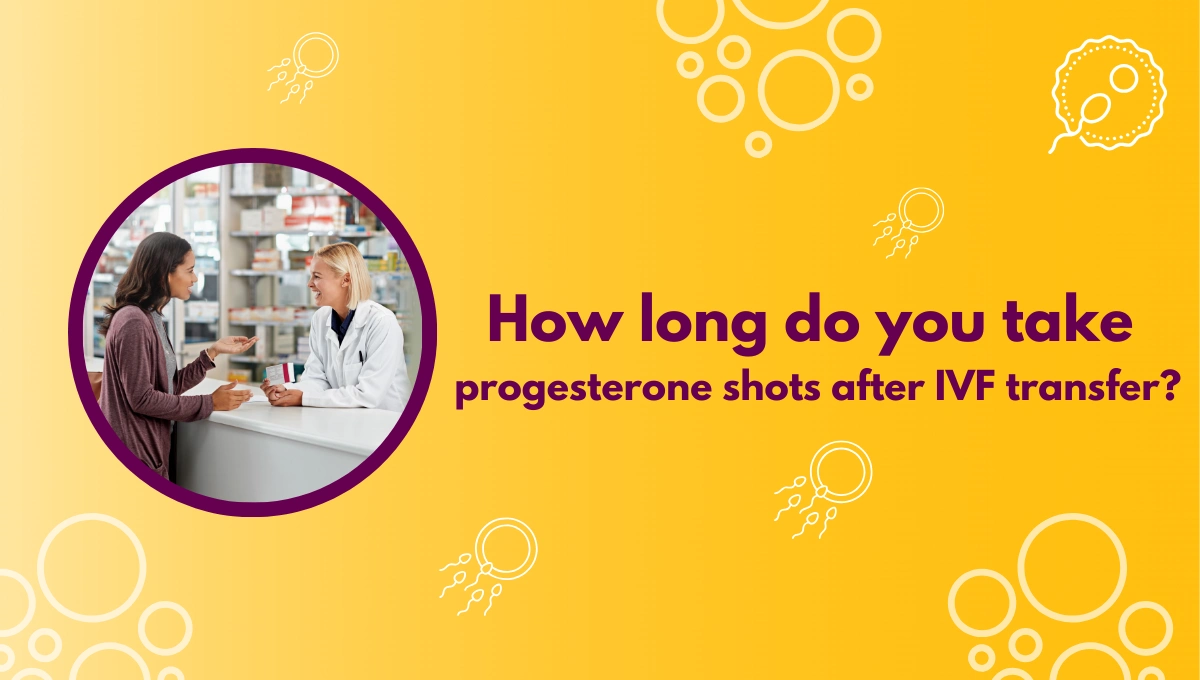How Long Do You Take Progesterone Shots After IVF Transfer?
When you’re going through in vitro fertilization (IVF), every step feels like a big deal—because it is! One question that pops up a lot after the embryo transfer is: how long do I need to keep taking those progesterone shots? If you’ve been poking around online or chatting with friends who’ve been through it, you might’ve noticed the answers can vary. That’s because it’s not a one-size-fits-all situation. Your body, your IVF protocol, and even your doctor’s preferences play a role.
In this deep dive, we’re going to unpack everything you need to know about progesterone shots after an IVF transfer. We’ll cover why they matter, how long you might need them, what the latest research says, and some practical tips to make the process easier. Plus, we’ll touch on stuff you won’t find in every article—like how your emotional state might tie into this and what happens if you stop too soon. Ready? Let’s get into it.
Why Progesterone Shots Are a Big Deal in IVF
Progesterone is like the unsung hero of pregnancy. It’s a hormone your body naturally makes after ovulation to get your uterus ready for an embryo to snuggle in. Think of it as the interior designer who fluffs the pillows and sets the mood for your little embryo guest. In a natural pregnancy, your ovaries pump out progesterone for the first 10 weeks or so until the placenta takes over. But IVF? That’s a whole different story.
During IVF, your body gets a little confused. The medications you take—like those to grow lots of eggs or stop you from ovulating early—can mess with your natural progesterone production. Egg retrieval, where they pull those precious eggs out, can also leave your ovaries less equipped to churn out enough of this hormone. That’s where progesterone shots come in. They step up to make sure your uterus stays cozy and supportive for that embryo you just transferred.
Doctors usually start you on progesterone right after egg retrieval or a day or two before your embryo transfer. For many, it’s an intramuscular shot—yep, the kind that goes into your backside with a bigger needle. It’s not exactly a spa day, but it’s worth it. Studies show that without this extra progesterone, your chances of implantation drop, and the risk of miscarriage might go up. A 2022 study from the Journal of Assisted Reproduction and Genetics found that women with low progesterone levels around transfer time had a 15% lower pregnancy rate. So, yeah, these shots are kind of a VIP in the IVF world.
How Long Do You Actually Take Progesterone Shots?
Here’s the million-dollar question: how long do you need to stick with these shots (pun intended)? The short answer is—it depends. But let’s break it down so you’ve got a clear picture.
For most people going through IVF, progesterone shots stick around for 8 to 12 weeks after the embryo transfer. That’s roughly the first trimester of pregnancy. Why? Because that’s when the placenta usually kicks in and starts making its own progesterone to keep the pregnancy going strong. Doctors call this the “luteal-placental shift,” and it’s a big milestone.
- Fresh Embryo Transfer: If you did a fresh transfer (where they put the embryo in a few days after egg retrieval), your ovaries might still be making some progesterone. But it’s often not enough, so you’ll likely take shots for 8-10 weeks if you get pregnant.
- Frozen Embryo Transfer (FET): With a frozen transfer, things are different. Your body isn’t ovulating, so it’s not making any progesterone naturally. That means you’re 100% relying on those shots (or other forms like suppositories). Most clinics keep you on them for 10-12 weeks after a positive pregnancy test.
But here’s where it gets personal: your doctor might tweak this timeline based on your situation. Some stop at 8 weeks if your blood tests show your placenta’s already on the job. Others play it safe and stretch it to 12 weeks—or even longer if you’ve had miscarriages before. A 2023 study in Fertility and Sterility looked at 1,200 FET cycles and found no big difference in live birth rates between stopping at 8 weeks versus 10 weeks, as long as progesterone levels were solid. So, there’s some wiggle room, but it’s all about what your body needs.
What If You’re Not Pregnant?
If your pregnancy test comes back negative (and I’m so sorry if that’s the case), you’ll usually stop the shots right away. Your doctor will confirm this, but the idea is to let your body reset for the next cycle. No point in keeping up the shots if there’s no embryo to support, right?

What Happens If You Stop Too Early—or Too Late?
Okay, let’s talk about timing. Stopping progesterone shots isn’t like forgetting to water a plant for a day—it’s a bigger deal. If you quit too soon, before your placenta’s ready to take over, it could put your pregnancy at risk. A small 2021 study from Reproductive Medicine and Biology found that women who stopped progesterone before 8 weeks had a 20% higher miscarriage rate compared to those who kept going until 10 weeks. The theory? Without enough progesterone, your uterus might not hold onto that embryo as well.
On the flip side, staying on progesterone longer than needed doesn’t seem to hurt. Some doctors keep patients on it past 12 weeks if there’s a history of loss or just to be extra cautious. But there’s no solid evidence that going beyond the first trimester boosts your odds of a healthy baby. It might just mean more needle pokes and sore spots for no real gain.
So, how do you know when to stop? Your doctor will likely check your progesterone levels with a blood test around 8-10 weeks. If they’re high enough (usually above 20 ng/mL), you might get the green light to ease off. But don’t DIY this—always wait for your doc’s okay.
Fresh vs. Frozen Transfers: Does It Change the Timeline?
Let’s dig into the difference between fresh and frozen embryo transfers, because it totally affects how long you’re on progesterone shots.
Fresh Embryo Transfers
In a fresh cycle, you ovulate (sort of) when they trigger your eggs to mature before retrieval. Your ovaries are still in the game, producing some progesterone. But the IVF meds—like GnRH agonists or antagonists—can throw things off, and the egg pickup process might zap some of that natural hormone production. That’s why you still need shots, but the timeline might be a tad shorter—often 8-10 weeks if all goes well.
Frozen Embryo Transfers
Frozen transfers are a different beast. Your ovaries are basically on vacation because you’re not ovulating. The whole cycle is “programmed” with meds like estrogen and progesterone to mimic a natural cycle. Since your body’s not pitching in at all, you rely on those shots from the get-go. Most clinics keep you on them for 10-12 weeks after a positive test, sometimes longer if you’re high-risk.
Here’s a quick comparison:
| Type of Transfer | Natural Progesterone? | Typical Shot Duration |
|---|---|---|
| Fresh | Some, but not enough | 8-10 weeks |
| Frozen (FET) | None | 10-12 weeks |
The takeaway? Frozen transfers usually mean a longer commitment to the shots, but it’s all about giving your embryo the best shot (sorry, I had to) at sticking around.
Making Progesterone Shots Less of a Pain (Literally)
Let’s be real—progesterone shots aren’t fun. They’re intramuscular, which means a long needle and a sore butt. But after chatting with some IVF veterans and digging into tips from nurses, here are some ways to make them bearable:
- Warm It Up: Keep the progesterone vial in your pocket or under your arm for a few minutes before the shot. Cold oil stings more going in.
- Switch Sides: Alternate between your left and right side each day to give your muscles a break.
- Massage After: Rub the spot gently for a minute to help the oil spread out and reduce lumps.
- Ice First: Numb the area with an ice pack for 30 seconds before the needle goes in. Less pain, more gain.
- Timing Trick: Do it at the same time every day—like after your morning coffee—so it becomes routine.
One woman I heard from said she turned shot time into a mini ritual: dim lights, a favorite song, and a treat afterward. It didn’t erase the sting, but it made her dread it less. What’s your go-to distraction?
Interactive Quiz: How Well Do You Know Progesterone?
Let’s take a quick break and test your IVF smarts! Answer these questions (in your head or on paper) and see how you stack up. Answers are at the end of this section.
- What’s the main job of progesterone in IVF?
A) Grow more eggs
B) Prep your uterus for the embryo
C) Boost your energy - How long do most people take progesterone shots after a frozen transfer?
A) 4-6 weeks
B) 10-12 weeks
C) Until delivery - Can you stop progesterone shots without a doctor’s okay?
A) Yes, if you feel ready
B) No, it’s risky
Answers: 1-B, 2-B, 3-B. How’d you do? If you got all three, you’re basically an IVF pro already!

What’s New in Progesterone Research?
Science doesn’t stand still, and neither does IVF research. Here’s what’s fresh in the progesterone world as of April 2025:
- Shorter Protocols: A 2024 study in Human Reproduction tested stopping progesterone at 7 weeks instead of 10 in FET cycles. The result? No drop in live birth rates for women with normal progesterone levels. This could mean fewer shots for some lucky folks in the future.
- Combo Approach: Some clinics are mixing shots with vaginal progesterone (like suppositories) to cut down on injections. A 2023 trial showed this combo had similar success rates to shots alone, with less discomfort.
- Personalized Timing: Researchers are pushing for more blood tests to tailor when you stop. If your levels hit 25 ng/mL by week 8, you might not need to go the full 12 weeks. It’s all about customizing care.
This stuff isn’t standard yet, but it’s exciting to think about. Imagine a world where you’re done with shots a little sooner—sounds dreamy, right?
Emotional Side of Progesterone Shots
Here’s something you won’t find in every article: those shots aren’t just physical—they can mess with your head, too. Progesterone can make you feel moody, tired, or even a little weepy. Add that to the rollercoaster of IVF emotions, and it’s a lot. One mom I talked to said she’d cry over spilled coffee during her shot weeks, then laugh about it later.
Why does this happen? Progesterone tweaks your brain chemistry a bit, kind of like PMS on steroids (or, well, hormones). It’s not all bad—some say it makes them feel calm—but it’s worth knowing you’re not alone if you’re feeling off. Here’s how to cope:
- Talk It Out: Vent to a friend or your partner. They might not get the science, but they can listen.
- Move a Little: A short walk can lift your mood without overdoing it.
- Treat Yourself: Shot day could mean a favorite snack or a Netflix binge. You deserve it.
Your mental game matters as much as your physical one, so don’t brush this off.
Real Stories: How Long Did They Take Shots?
Sometimes, hearing from others makes it click. Here are two quick stories from IVF warriors:
- Sara, 34, Fresh Transfer: “My clinic had me on shots for 9 weeks after my transfer. I got pregnant, and they checked my levels at 8 weeks—super high—so we stopped a week later. No issues, and my baby’s 6 months old now!”
- Lila, 29, FET: “I did a frozen transfer and stayed on shots for 11 weeks. I’d had a miscarriage before, so my doctor was extra careful. It was a slog, but my little guy was worth every poke.”
These aren’t medical advice—just real-life takes to show how it can vary.

What If Shots Aren’t Your Thing?
Not everyone’s a fan of needles (who is, really?). Good news: shots aren’t the only way to get progesterone. Here’s a rundown of alternatives and how they stack up:
- Vaginal Suppositories: Little capsules you pop in daily. They’re less invasive, but some studies (like one from 2022 in Fertility and Sterility) say they might not work as well for FET cycles—live birth rates were 5-10% lower than with shots.
- Vaginal Gel: Once-a-day option, FDA-approved for IVF. It’s comfy for some, but absorption can vary.
- Oral Pills: Easiest to take, but your liver breaks them down fast, so they’re not as effective for most IVF cases.
If shots are a hard no, talk to your doctor. A 2023 study found that combining vaginal progesterone with shots every few days worked just as well as daily shots for some women. It’s not standard everywhere, but it’s an option to explore.
Poll: What’s Your Progesterone Preference?
Time for you to weigh in! If you’ve done IVF (or are about to), what’s your take on progesterone delivery? Pick one and share your thoughts in your mind—or with a friend if you’re feeling chatty:
- A) Shots all the way—reliable and done in a sec
- B) Vaginal stuff—less pain, more chill
- C) Whatever works, just get me pregnant!
No wrong answers here—just curious what you vibe with.
When Things Don’t Go as Planned
Sometimes, IVF throws curveballs. Maybe your progesterone levels are low despite the shots, or you’re spotting early on. What then?
- Low Levels: Your doctor might up your dose or add another form (like suppositories on top of shots). A 2024 study in Reproductive BioMedicine Online found that boosting progesterone to 15-20 ng/mL in the first two weeks post-transfer cut miscarriage risk by 12%.
- Spotting: It’s scary, but not always a dealbreaker. If it’s light and your levels are good, you might just keep going. Heavy bleeding? Call your clinic ASAP.
- Allergies: Rare, but some folks react to the oil in progesterone shots (usually sesame). Switching to olive oil-based shots can fix it.
The key? Stay in touch with your team. They’ve got the tools to tweak things and keep you on track.

A Little Math: How Much Progesterone Are We Talking?
Ever wonder how much progesterone you’re actually getting? Let’s do a quick, totally unscientific breakdown based on a common dose—50 mg per shot:
- Daily: 50 mg x 7 days = 350 mg/week
- 8 Weeks: 350 mg x 8 = 2,800 mg total
- 12 Weeks: 350 mg x 12 = 4,200 mg total
That’s a lot of hormone! It’s not exact—doses vary—but it shows how much work those shots are doing. Your body only needs about 20-30 mg/day naturally in early pregnancy, so this is like VIP treatment for your uterus.
Wrapping It Up: Your Progesterone Plan
So, how long do you take progesterone shots after an IVF transfer? Most likely, 8-12 weeks if you’re pregnant, depending on your transfer type and your doctor’s call. It’s a marathon, not a sprint, but it’s all about giving your embryo the best start. Whether you’re team shot or dreaming of a needle-free future, the goal’s the same: a healthy pregnancy.
Stick with your clinic’s plan, lean on your support crew, and don’t be shy about asking questions. You’re not just a patient—you’re a partner in this journey. Got a progesterone story or tip? I’d love to hear it (in spirit, at least). Here’s to you and that little embryo making it work!







